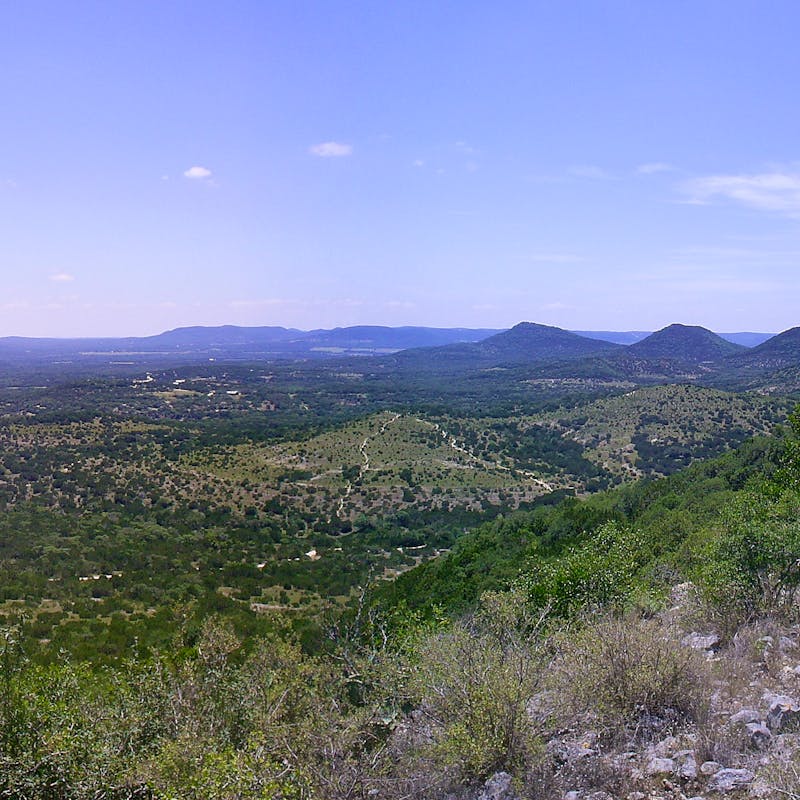This blog was written by Defenders of Wildlife Southwest Intern, Almalena Hinojosa.
We’re taught to love nature by what we can see — butterflies, sunsets and wildflowers — but what about the creatures we never lay eyes on? They live in complete darkness, drifting through the same groundwater that fills our faucets and feeds our springs. They’re under your neighborhood, favorite swimming hole and maybe even under your feet right now. It’s almost miraculous how they survive in an increasingly unstable world.
We use and drink water every day, but don’t ever think about who — or what — depends on it. These forgotten, freaky friends — rightly considered Texas Treasures — deserve to be loved. Maybe after learning more about them, you’ll see we’ve been looking in the wrong direction all along.
Meet the Weirdos
Austin Blind Salamander (Eurycea waterlooensis)
Okay, technically, this weirdo does have eyes. But they’re tiny, covered by skin and basically nonfunctional. They can detect light and dark vaguely but not shapes. Besides sensing pressure and vibrations through its skin like other salamanders, they also smell and taste their way through the dark and use their feathery gills to stay oriented in flowing water.
Like a ghost of the aquifer, it spends most of its life underground in the Edwards Aquifer beneath Austin. Every so often, though, it appears at spring outlets at Barton Springs, providing scientists with a rare glimpse of this tiny creature who depends on clean water flowing from the aquifer. If that water stops or gets polluted, the salamander can’t survive.
Toothless Blindcat (Trogloglanis pattersoni)
This fish has never seen sunlight. It drifts in total darkness, feeling the world through tiny vibrations. Residents of an ancient underground world, the toothless blindcat is dependent on clean, stable groundwater.
These fish are named for literally having no teeth or eyes! They instead use special sensors on their skin and whiskers to feel vibrations and taste tiny bits of food drifting through the dark water. This blind fish lives deep underground in the San Antonio area. So deep, people cannot access their habitat. In fact, we only know of their existence because a few have been found in wells.
The toothless blindcat, however, is a living indicator of aquifer health. Entirely aquifer-bound, they breathe groundwater, so even though you may never meet them, know you share the same water every day.
Widemouth Blindcat (Satan eurystomus)
Yeah, that’s right, the widemouth blindcat’s scientific name conjures images from a hellscape. This toothy, predatory underground creature lives more than 900 feet underground. No eyes are needed here, but a big — or wide — mouth sure helps this fish to feed on fine organic debris and tiny invertebrates that drift through groundwater.
Because underground aquifers are low in nutrients, the widemouth blindcat’s jaw shape evolved to allow it to suck up whatever floats by, including fellow cave-dwellers. This evolutionary design for efficiency has allowed the fish to sit at the top of the underground food chain rightly earning it another name, “Prince of Darkness!”
Love in Weird Places
These underground creatures aren’t just curiosities; they are living indicators of spring and aquifer health. The Texas Hill Country is experiencing unprecedented drought conditions that can heavily influence salamander populations, like reducing growth rates and increasing mortality rates. And they are at risk because they only live in a small home range and are dependent on clean, flowing, stable water.
The same water we drink, splash in and can’t live without. The same water that runs through our shared story as Texans. And the same water threatened by overuse and pollution. If we do nothing, we are not only at risk of altering our native ecosystems that draw people to the Hill Country, but we also risk losing species found nowhere else in the world.
Just because these eyeless weirdos live the entirety of their lives unseen, it doesn’t mean their story isn’t still a part of ours. If they disappear, it means our clean water is disappearing too.
So, what can we do? (Without becoming cave-dwellers ourselves)
You don’t need to become a cave-dweller to help these little creatures. Conserving water is one of the easiest and most effective ways to help! Take shorter showers, plant native plants that require less irrigation and incorporate rain barrels whenever you can to capture rainwater for gardening use instead of turning on the faucet.
Normalize loving the unseen. Many people have no idea these little weirdos even exist, let alone how awesomely unique they are! Education goes a long way, and now after reading this blog, you’re geared up to advocate for our Texas Treasures.
If you’re ever able to take direct action, volunteer for or donate to organizations like Defenders of Wildlife who are working hard on the ground to save these animals, their habitats and our clean water sources. In a world of flashy animals, viral videos and filters, maybe the bravest thing we can do is care deeply for the quiet, slimy creatures we’ll never get to meet. Many of us personally know the impact of going unnoticed all too well, and these little underground friends need our support, now more than ever.










